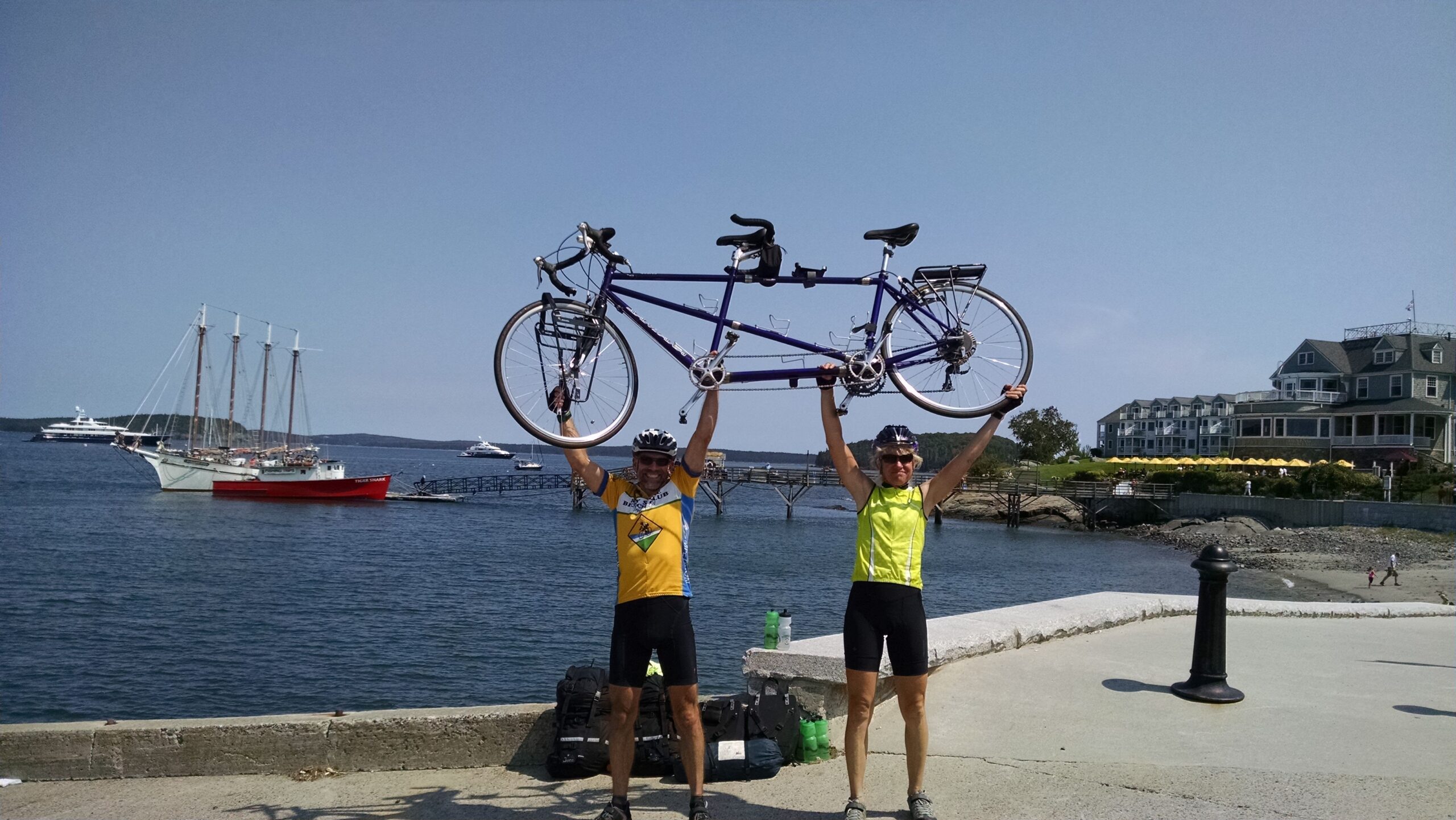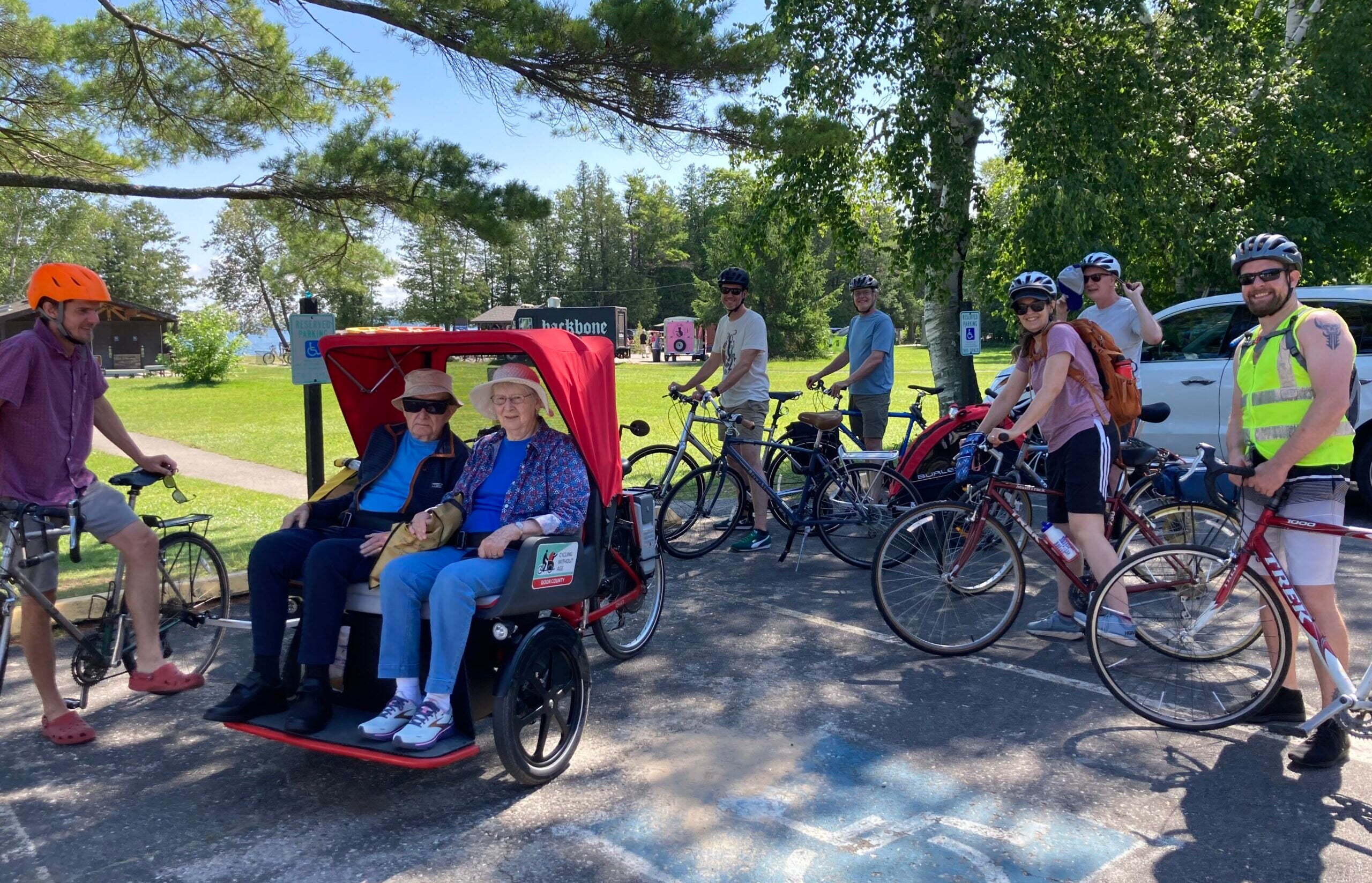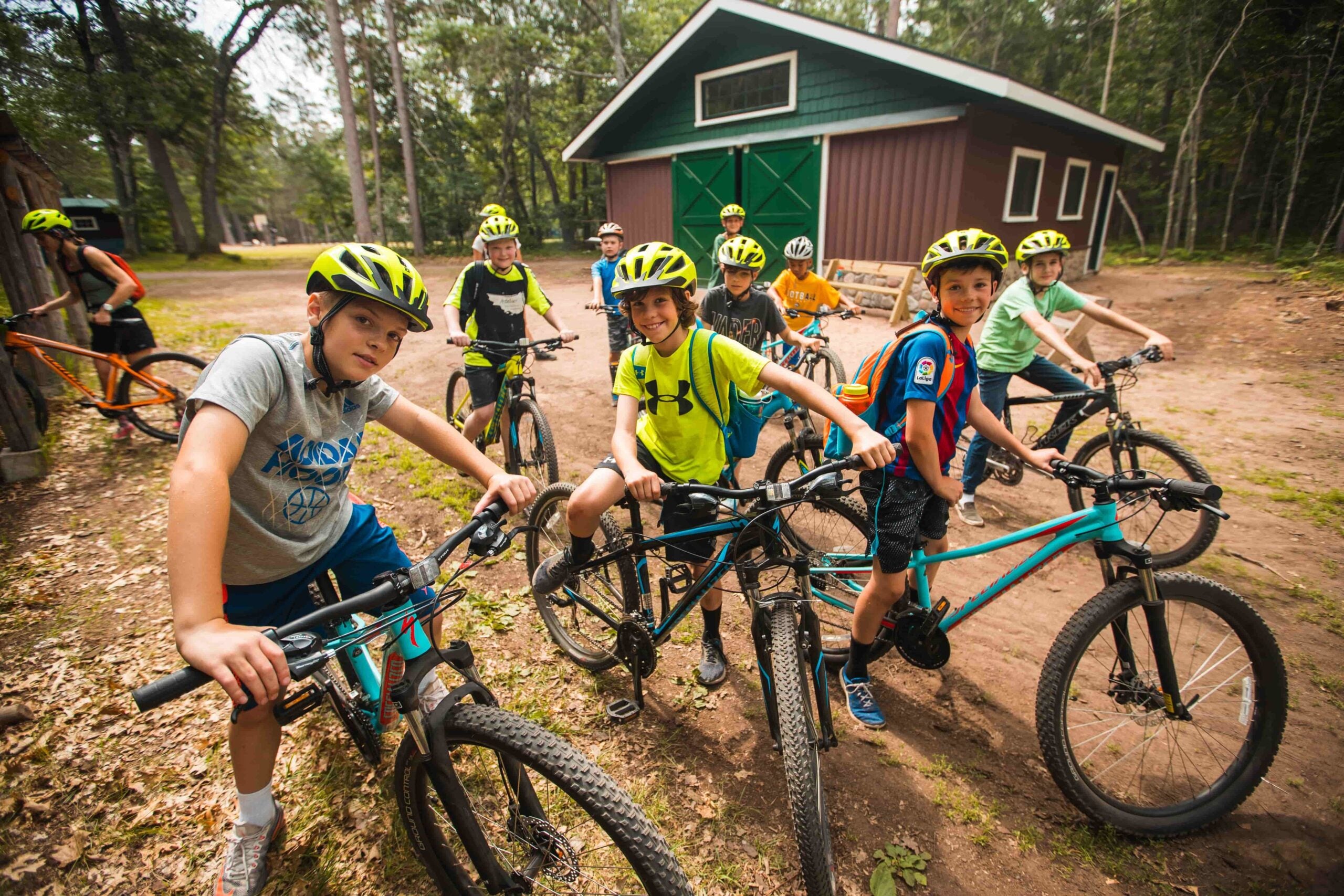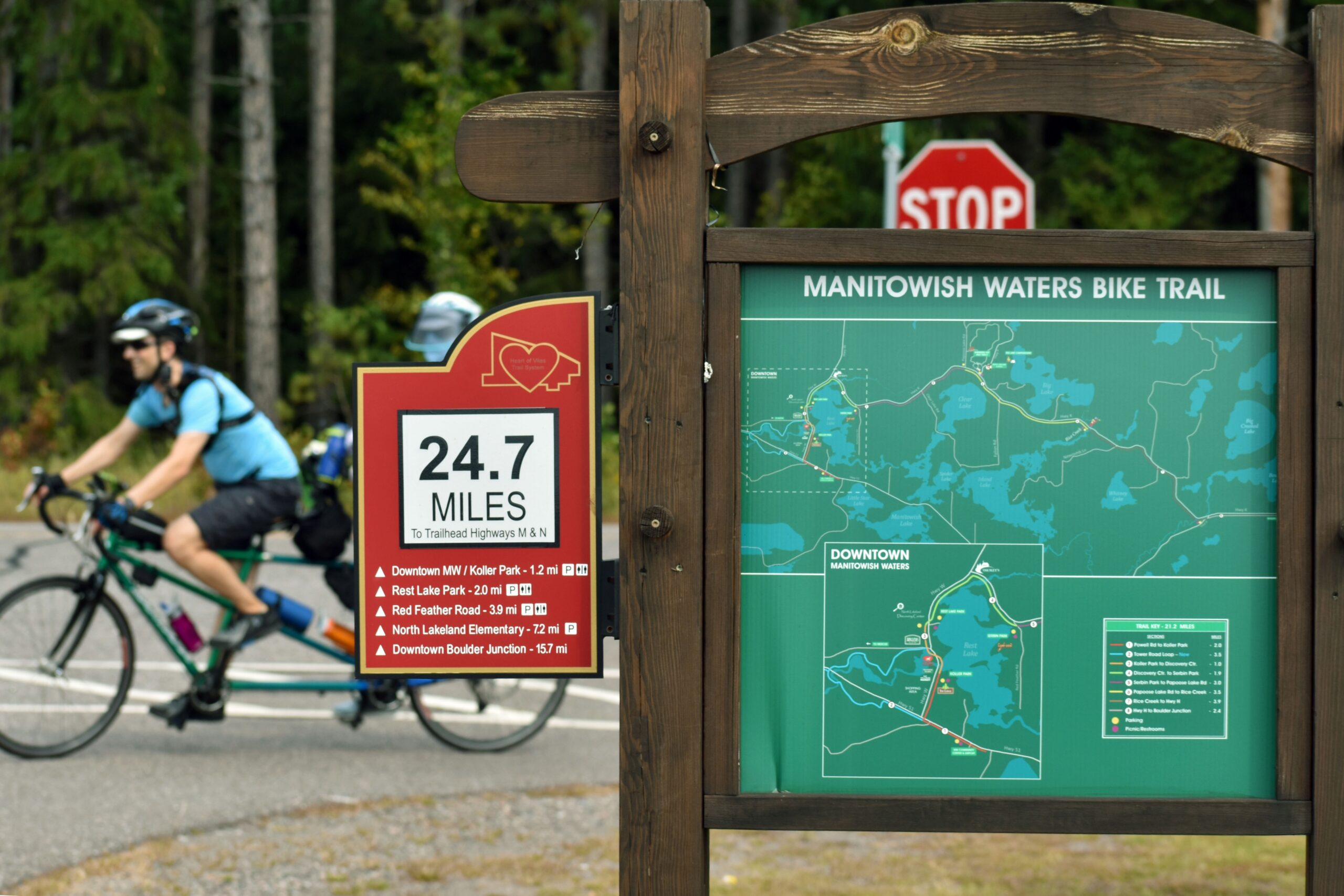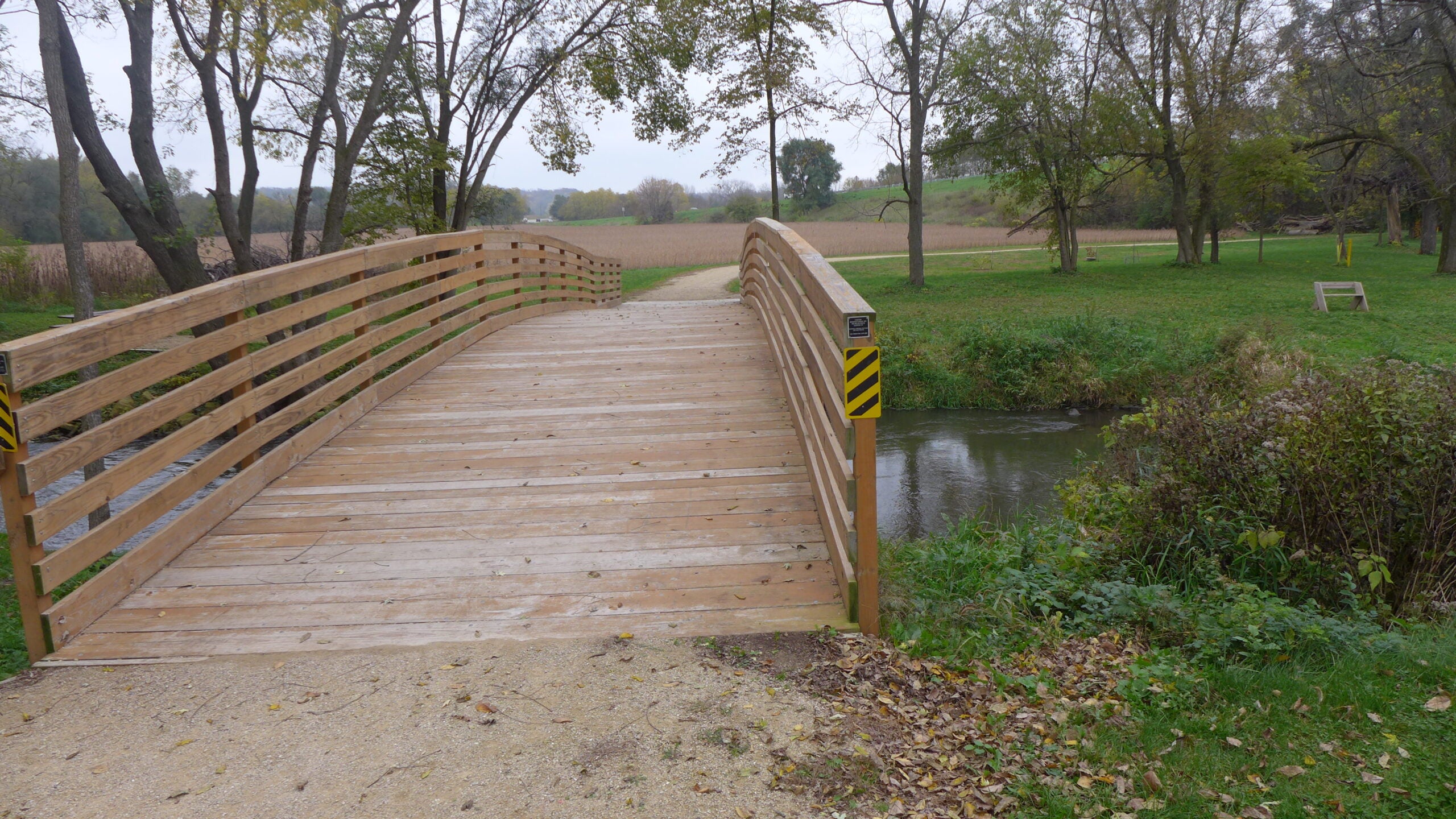Testing their physical endurance as much as the strength of their marriage, Tracy and Peter Flucke of Ashwaubenon have pedaled thousands of miles on their tandem bicycles.
The couple is inseparable as business partners and co-authors of two books about their tandem-riding adventures.
The Fluckes cite a truism among partnered riders of bicycles built for two: “Whichever way your relationship is headed, it’ll get there faster on a tandem.”
News with a little more humanity
WPR’s “Wisconsin Today” newsletter keeps you connected to the state you love without feeling overwhelmed. No paywall. No agenda. No corporate filter.
“At this point, we’re probably good to go, but there are lots of times we still question that,” Peter said during a recent appearance with Tracy on “The Larry Meiller Show.”
The Fluckes have ridden across the U.S. three times and written two books: “Coast to Coast on a Tandem” in 2017 and “Bicycling Historic Route 66” in 2023. Together they operate WE BIKE, etc., a bicycling, pedestrian safety and infrastructure consulting firm.
The couple is currently 20 days into a tandem ride from Brown County to New York City. You can follow their journey on Tracy’s blog.
On “The Larry Meiller Show,” the two talked about what they’ve learned throughout their biking adventures.
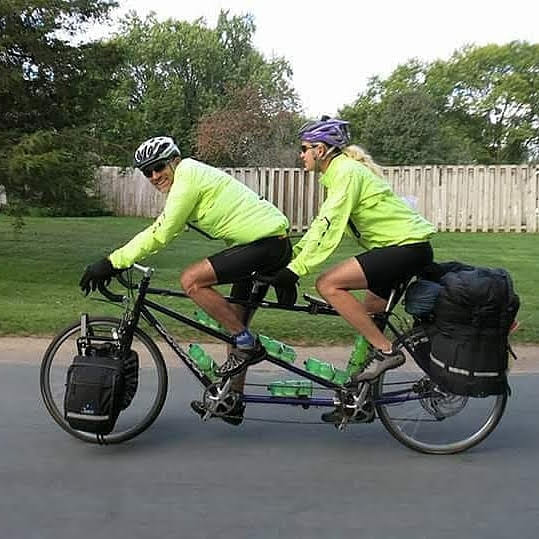
The following interview has been edited for brevity and clarity.
Larry Meiller: Your first cross-country tandem trek was in 2014 from Bellingham, Washington, to Bar Harbor, Maine, which has got to be, what, 4,000 or so miles?
Peter Flucke: 4,362. But who’s counting?
LM: In your new book, you said that trip tested your marriage. How so?
PF: I think what we learned the most about was our relationship. I used to be a cop, so I’m usually pretty sure that I’m going to prevail whatever the situation. But as I got worn down, I treated everything like an emergency. What I forgot was I had this incredible resource, Tracy, literally 6 inches away from me. And what I needed to do was start tapping into that. It’s really embarrassing to say now, but I have gotten better at it.
LM: You don’t ride with a large group. I’ve been on large group rides where there are SAG vehicles and stops every 20 miles. You don’t do it that way.
Tracy Flucke: No, we were totally self-supported. We carried all of our camping gear, so we either camped at night or stayed at hotels or motels. We also used warmshowers.org, which is an online community for long-distance cyclists. When we’re out on the road, we can reach out to Warm Showers hosts and ask if can we stay at their homes overnight. There’s no money exchanged; it’s all goodwill.
Our first cross-country trip restored my faith in humankind. People were so nice. They would do things for us when we rolled into their town, like buy us lunch, pay our ferry fee or invite us to stay at their homes.
(Our second cross-country tandem trek in 2015 following) the Mississippi River was a tough ride because of the isolation. A lot of towns have moved because of flooding, so it was very difficult sometimes to find services — where to stay, where to get food.
We went back and forth across the Mississippi River so many times on these beautiful bridges and into different communities on either side. It was very fun. We were northerners learning the culture (of the Deep South). The people there were also so kind. But it was definitely a challenge with the heat and the humidity as we continued to move south on that trip.
“Whichever way your relationship is headed, it’ll get there faster on a tandem.”
The Fluckes
LM: Your latest book recounts your 2016 ride on Highway Route 66. How bike friendly is Route 66?
PF: By and large, we thought it was very friendly. The farther west we went, the more the road shoulders improved. And a lot of Route 66 is now the frontage road for I-40 and I-44, so nobody’s driving on it because everybody is in a big hurry and on the interstate highways.
Somebody pointed out to us recently that biking Route 66 now is probably much more akin to what it was like to drive a car down it in 1926. (Back then) the vehicles were not as reliable and couldn’t go as far. You needed services at more routine intervals. Now you can drive 450 miles with a soda in the cupholder next to you.
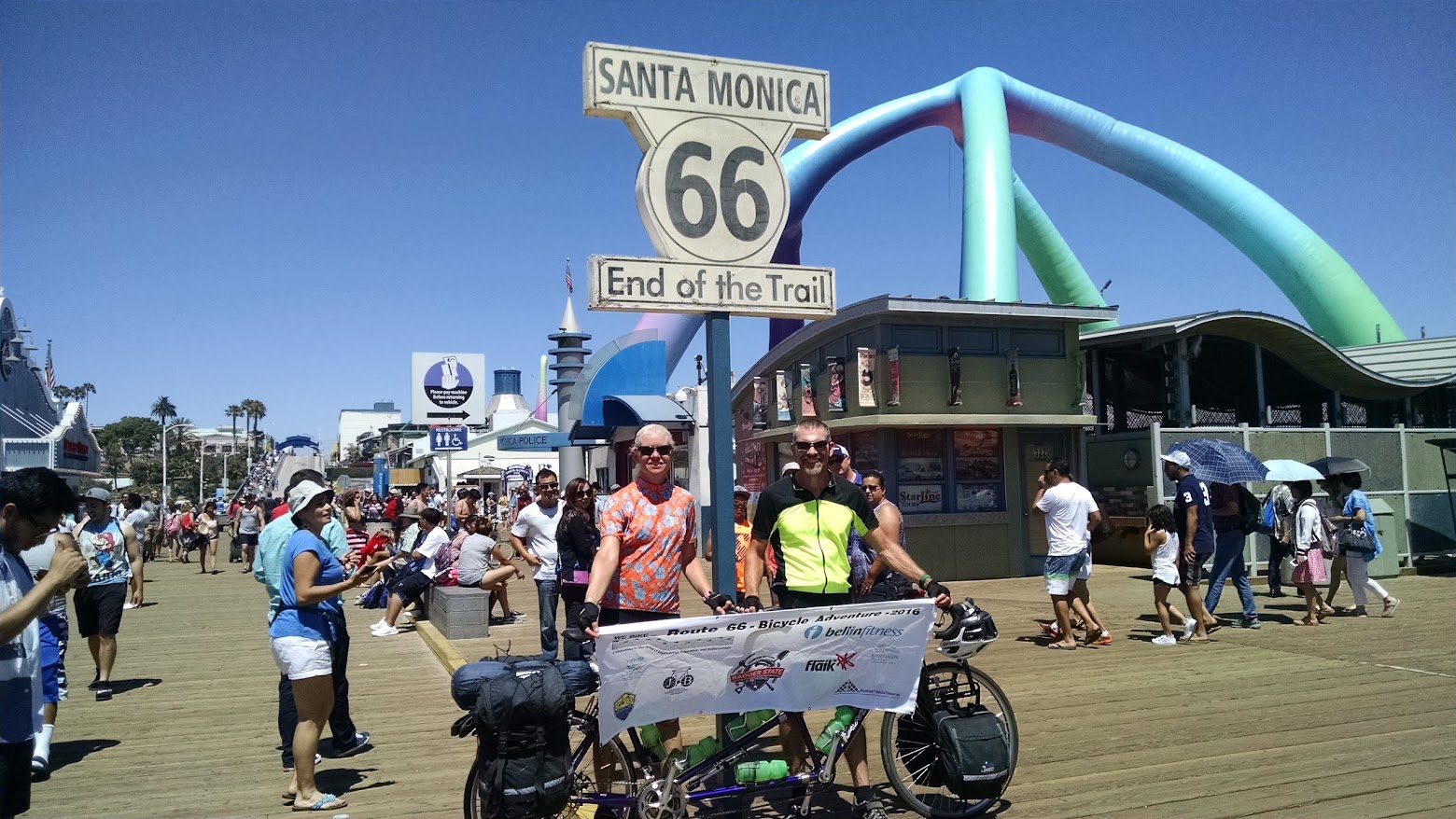
LM: I like the approach you took writing your books by including both of your perspectives.
PF: We had to be very cognizant that riding a tandem is very different from riding a single bike. Tracy is sitting directly behind me and can’t see 30 degrees in front of her. Because of the length of the bike and some of the handling characteristics, I can look back, but it’s way easier for Tracy to take in everything from 180 degrees back.
So when we were talking to our publisher about writing the book, he said, “You need to write it in both of your voices, because you don’t get a 360-degree experience without both of us talking.”
LM: You’ve used the Adventure Cycling Association. They provide mapped routes.
TF: Adventure Cycling has great maps of thousands of routes throughout the United States and Europe. We’ve used their maps on all of our trips. There are maps very similar to what AAA offered motorists years ago. They tell you what services are available in a community, where there’s camping or hotels and motels, places to eat. So it’s ideal.
It also gives you a clue if there aren’t services for really long distances. On Route 66, there were sections with no services for almost 100 miles. So you have to really plan ahead, make sure you have water, food, everything — especially when it’s as hot as it was on Route 66. So the maps are great. They give you all the information you need and some history of the place you’re going, elevations, the whole works.
LM: The amount of water you had to carry on some of the hot days you were on the road added to the weight of the bike.
PF: If you add us together with the gear and the bike, we’re roughly 450 pounds. On flat roads, we can usually outpace most solo cyclists, even with all of our gear. We probably average about 15 mph. Going downhill, I’m usually holding the bike back at 45 mph. But it goes uphill like a brick.
TF: I’m not a big one for going really fast downhill. The running joke with us is I’ll ask Peter what speed are we are going downhill. “25 mph,” he’ll say. We’re always going 25.
PF: I do have to keep us within a margin of safety because I’m responsible for more than myself. It would be bad to crash with the mother of your children.
LM: You have a way of communicating that you’ve developed.
TF: A lot of days it’s windy and it’s hard to hear one another, so we use a lot of hand signals or one word directions. Some tandem riders use headsets so they can communicate easier, like a lot of motorcyclists. We seem to be able to communicate well enough without them.
PF: In early spring a couple years ago, we decided to do a 1,200-mile tour in Kansas and Nebraska. We had 35-mph headwinds and 50-mph crosswinds. It was literally impossible to talk. We went completely to hand signals.
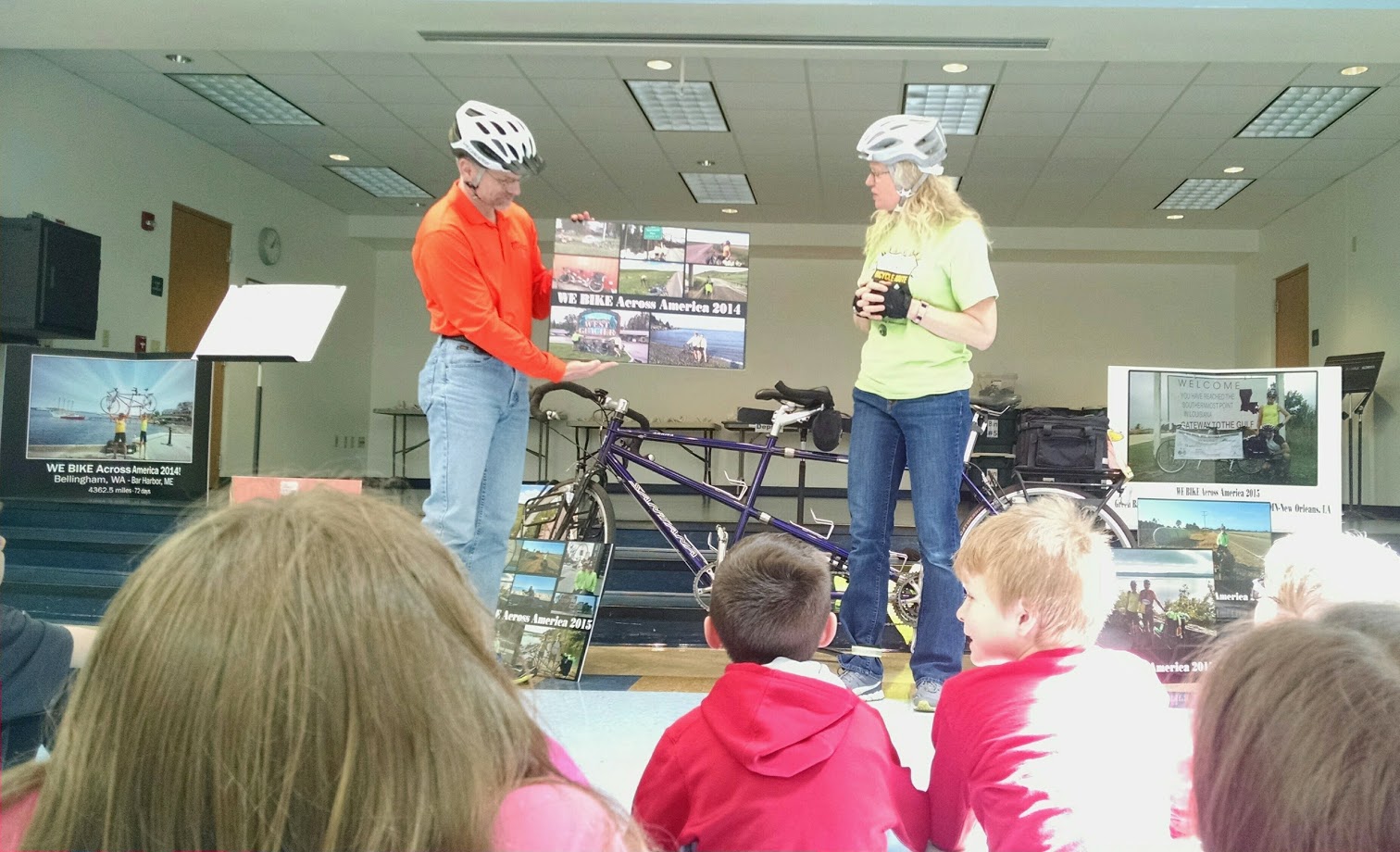
LM: Tell us about your business.
PF: WE BIKE, etc., is our consulting business. We specialize in engineering, education and enforcement for walking, biking and healthy communities. Our backgrounds are in parks and recreation. For years now, we’ve been training planners and engineers on how to design and build safer bicycle and walking facilities, and teaching police officers about which laws to enforce to make roadways safer.
Everyone can use more education on pedestrian and bicycle safety. Motorists, pedestrians, bicycles, adults, children — everybody.
Wisconsin Public Radio, © Copyright 2025, Board of Regents of the University of Wisconsin System and Wisconsin Educational Communications Board.

